Contemplative Approach towards Curtailing Global Warming
Introduction
For the purpose of the curtailment of global warming, the process of engineering of the climate could be envisioned as a premeditated and deliberate measure of large scale intervention within the climate system of Earth. Climate engineering technology could be described as the most extensive and deterministic indicators of the necessity of mitigation of climate change. Such processes have gained pervasive attention within the circles of science, politics and public discourses since the growth of the incremental and conventional measures of mitigation of climate change has been primarily very sloth. The year 1992 had witnessed the negotiations pertaining to The United Nations Framework Convention on Climate Change (UNFCC) and it has been more than two decades since then. The objective of the UNFCC is to prevent the perilous anthropogenic interference in the existing climate system. Various efforts have been undertaken by the societies and governments to commence the repairing of the degradation which has already affected the existing environment, however, such efforts constitute work which is already in progression and, such efforts have yet to arrest the rise in temperatures globally which is progressing unimpeded (Stern, 2013).
All of the climate engineering propositions, which are based on space technology, could be emplaced into the category of solar radiation management which could reduce the extent of light of the Sun which could reach the surface of the Earth. The most extensive measure of incoming radiation from the Sun could be identified as 342 W / m2 and out of this entire measure of received Sunlight, the surface of the Earth could only reflect 77 W/m2 in a direct manner and 30 W / m2 is reflected from the cloud cover in a direct manner. The balance of energy of Earth could be impacted directly through any depletion of the 235 W/m2 of the solar radiation which is primarily observed by the surface of the Earth or by the atmosphere. In a similar manner, the improvement in the ratio between the energy which is absorbed and which is reflected, in the manner of 30:70, could have an effect which could be similar in strength to the previously described process (Larosa and Mysiak, 2019). The focus of the process of Solar radiation management (SRM) is on the reduction of the measure of sunlight which could be absorbed within the atmosphere of the Earth either through enhancement of the albedo of the Earth such as through the application of greater reflective materials on the roofs, through reduction of the surface levels which receive sunlight and through application of aerosol particles within the stratosphere so that the extent of reflection of sunlight could be enhanced.

The fundamental sources of global warming are intended to be addressed through the utilisation of carbon capture strategies in either an indirect or in a direct manner (report, 2009). The direct approaches constitute various schemes such as processing the absorbed Carbon Dioxide which could be collected from the soil. On the other hand, the indirect approach constitutes the process of fertilisation of the oceans so as to increase the growth rate of algae for the purpose of greater absorption of Carbon Dioxide through such algae. James Early had introduced the initial reseaerch for the space sunshade in 1989 through the utilisation of an enlarged Fresnel Lens which could be constituted through sand glass from the Moon. This lens is required to be placed at the midpoint from the Earth and the Sun so as to undertake effective deflection of light from Earth (Clark, 2009). The subsequent studies have utilised several methods through which controlling of light and external systems have been proposed without altering the primary concept of the process.
Project Purpose
A research effort sponsored by NASA in 2006 found that the Planet would cool enough to offset even a doubling of atmospheric carbon dioxide by lowering global sunlight levels by only 2 per cent (Mankins, Kaya and Vasile, 2012).So that the idea of this project is placing a sunshade-mirror (figure 1) in space to reflect or block sunlight as well as create a design and the best material for the Mirror design then identified and detailed. After, for example, launching this huge mirror into orbit, or constructing it there on the moon. It will be put in the balance of gravity between Earth and the Sun or in a ring around our planet (at the L1 Lagrange point).
Very few researches put forward in scientific literature dive especially deeply into the practicalities of the sunshade-mirror being debated designing and deploying. Many stops at mass, size, and diameter overall cost estimates of magnitude or equivalent accuracy. Products are often defined only in very general terms and methods and options are often ignored of not being specific beyond the initial suggestion of design, maintenance and launch etc.
There are multiple methods of Solar radiation management that could be used to rapidly cool the Earth, (Seifritz, 1989) however it is hard to weigh some of these methods objectively against each other. Some ideas, such as the use of stratospheric aerosols have a large body of research and literature to draw from while others, such as use of cloud albedo enhancement have much less material to examine. Also, concepts can be reliant on, or discussed mainly in terms of, there having been significant improvements of current technology.
This project presents a novel dynamic design for the sunshade that depends on Sánchez and McInnes’s concept (Stern, 2013), but with different mechanism. The diameter of the design would increase or decrease referred to sun irradiation intensity. The sum of this research would provide a reader with a strong understanding of space sunshades, current and
previous proposals for sunshades as well as alternative methods for geo-engineering, the use of geo-engineering alongside or as opposed to climate control mitigation and adaptation methods and the feasibility of space sunshades.
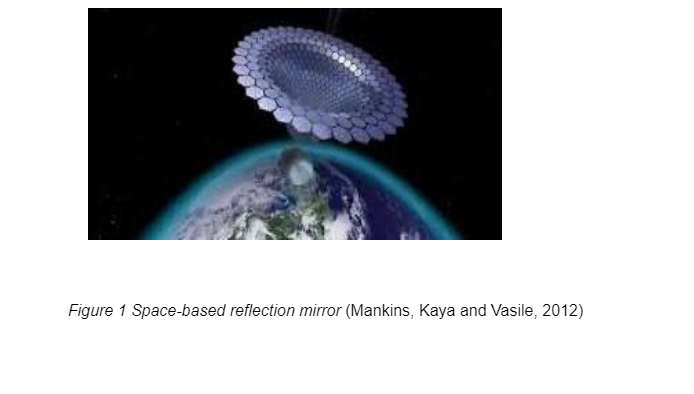
Project Aim & Objectives
The corresponding project related aims and objectives have been transformed from the originally envisaged ones within the previously formulated Plan Report. The initial revised objectives and aims of the project are as the following:
Production of a comprehensive literature review on solar sunshades.
Create the design of sunshade and investigate the design parameters influences on the sunshade design.
Display a cost study for the design and its feasibility and practicality of space mirror.
Objectives
Review comprehensive literature on existing sunshade ideas in the room.
Determine concept principles by review of current proposals.
Comparison of different approaches for handling solar radiation (SRM) to assess the positives and drawbacks of space sunshades relative to other alternatives.
Determine where space sunshades actually work in the SRM area by analyzing the SRM model, and how further sunshade research and development can be seen as a beneficial expenditure in geoengineering capital relative to other approaches.
Sunshade-mirror launch study, design, repair, and disposal options.
Review of the practicalities of sunshade-mirror use in world affairs, sunshade policy and future side effects.
Description in detail of the material required to produce the effect of shade generation through the sunshades and their operational properties
Compared to the Plan Report aims and objectives, the current set are somewhat simplified. Referred to the plan report feedback comments about the pervious third aim: the cost, as it was vague, not clear and has large unknowns to d determine the cost boundaries which make the cost very difficult to estimate, so the project will focus on the design structure and material and feasibility evaluation.
The objectives, previously laid out in the Plan Report as Activities, have been changed substantially:
Comprehensive literature review on solar sunshades.
Different methods of sunshades.
Focus on the previous proposal related to our design.
Designing a Sunshade of one big mirror.
Nature of sunshade-mirror.
Dimensions and physical properties of sun mirror (size, mass etc.).
Assumptions and Constraints relating to project.
Constraints on sunshade mirror material.
Thermal emissions.
Economic analysis for the design and its feasibility and practicality of one big space mirror.
Construction, maintenance and deconstruction of a sunshade (how, who, costs, etc.).
Side-effects of solar sunshades and consequences of these (what, where, responsibility, contingencies, fail safes).
Advantage and disadvantage of solar sunshades(risks).
Ethical Considerations
The plan has little or no ethical concerns because it is software modeling and analysis for testing its use. Many of these projects, if not all, are either theoretical, model-oriented, or in the trial phase. A manmade solution to the manmade problem is proposed in the project. If we talk about the drawback of the project after establishing in space the sun reflector mirror causes the global dimming phenomenon, in which they change the reflectivity, or albedo, of the Earth, reflecting heat back into space. For example, a 0.5 percent increase in albedo will approximately halve the carbon dioxide doubling effect. Because most greenhouse gas remediation techniques would only have long-term effects, solar radiation management (SRM) techniques are considered "quick-fixes" that can be used before greenhouse gas levels are controlled.
If the worst case occurs, a space sunshade is a possible and feasible stop-gap solution when necessary to cool the Earth for decades. As an alternative to reducing emissions and carbon removal, it can’t and should not be continued indefinitely in order to ensure our planet's long-term climate and environmental health.
Chapter 2 Literature review
The first proposed by Oberth in 1929 in the framework of climate change through reflectors and constitutes partial similarity to the notion of situating solar power generation plants with extensive physical dimensions into the orbit which had been initially suggested by Glaser during1968 as fundamental concept related to engineering.
James T. Early (1989) had formulated multiple summaries from the publications of Early involving the British Interplanetary Society Journal (1989): Space Based Solar Shield to Mitigate Greenhouse Effect (Early JT, 1989). The issue of December, 1989 of the British interplanetary Society Journal outlined the suggestion of James Early regarding combating global warming on account of greenhouse gases. The idea highlighted in the journal consisted of interception of an approximate measure of 2% of solar radiation which is emitted towards Earth by the Sun through utilisation of a disc which could have a diameter of 2000 km. furthermore, the disc would be required to have a thickness of 10 µm and the weight of the disc would be required to be, approximated 1011 kg which would not include propulsion and support mechanisms. The disc would have to be constituted from glass with lunar soil as the core constituent of such glass. Thus, the essentiality would be to perform an analysis of the differential glasses which could be constituted through utilisation of lunar soil so as to confirm that such glasses with extensive suitability of purpose could be constructed as well as to determine the specific material and chemical properties associated with such elements. Furthermore, Early had also envisaged two probable methods which regarding the development of such device. The initial one has been the disk which would be opaque and would have very low reflectivity on the side of the Sun and very high emissivity on the Earth side. Early had not discussed about the various issues pertaining to the support structure of the sunshade or the keeping process of the station or even the methods of production and installation of the sunshade along with the emplacement of the object in the most effective position so as to preserve the object over longer periods. However, the price of the sunshade could be estimated to be in between $1 trillion to $10 trillion. This could be further estimated to be in between $2 trillion to $20 trillion in the United States of America as per inflation adjustment.
Teller, Wood & Hyde (1997) had summarised from the paper published by Teller as Global Warming and Ice Ages: Prospects for Physics-Based Modulation of Global Change which had been published in 1997 (Teller, Wood and Hyde, 1997). This particular publication had delineated in an in-depth manner, a number of probable mechanisms through which deflection and reflection of the solar radiation which comes to Earth. One of such mechanisms could be outlined as space sunshades which comprises of a scattering system with a long angle which could be deployed at L1 or, hypothetically, towards greater proximity of the Sun. On the other hand, the other scattering system could be utilised in a high angle within the Low Earth Orbit (LEO). The actual weight of the low angle design under proposition would be required to be 34x105 kg with an ideal approximate weight of 15x105 kg. Although Early had not discussed the issue in the subsequent research, Teller et al had outlined the requirements associated with the various methods so as to accomplish the radial and angular moments of the system. It has been outlined that such a process could be achieved through addition of two particular elements. The initial one has been the reflector with a comparatively small size (0.03%) and greatere angle so as to effectively conduct retro-reflection which could add 15% of further cost overheads so that proper management of the angular and radial momentum flux could be achieved. The second one could be identified as placing the entire reflective surface at a close proximity to the Sun which could be of lesser distance than L1. The application of platelets formulated by electrically highly conductive materials could be considered which have been previously discussed in the research. These could absorb sunlight through photo-electric measures and then could thermally radiate approximately half of the absorbed sunlight while the rest of the absorbed energy could be dissipated through space. Such instruments could be utilised stratospherically however, these instruments could be sustained longer within the low earth orbit and the feasibility could be acknowledged from the perspective that such instruments would require higher levels of oxidising of the constituent materials as well as the measure of the process through which oxidisation could be performed within the stratosphere would be required to be worked out as well. Apart from these, as had been the case with the Lagrange Point L1 system, the platelets would be required to be subjected to station-keeping methods and this could be considered to be an unwarranted complication pertaining to the devices. The estimated platelet requirement regarding the system could be considered to be in range of 14x107 kg. The next option would involve utilisation of a metallic mesh which would be required to be ultrafine in thickness so as to reflect the particular wavelengths of solar radiation back to space. An approximate about of 90x106 kg mesh would be required inclusive of station keeping and structure weight. The estimated costs of either of such systems could range in between $ 70 to $140 million per annum.
Robert Angel – (2006) had outlined the summary from the research performed by Angerl named Feasibility of cooling the Earth with a cloud of spacecraft near the inner Lagrange point (L1) (Angel, 2006). The basic idea of Angel has been to utilise the sunshade with the enlarged diameter in line of the Sun and the Earth at close proximity to the Lagrange Point L1 so as to deflect the light from the Sun at the other direction from the Earth. However, the sunshade disc proposed by Angel does not constitute a singular large disk, on the other hand, it represents a flyer cloud. The size is elliptical and the total weight could be measured at 14x109 kg, 6,200 km by 7,200 km with a reflective capacity of 1.8% of the received solar radiation and not the 2% and this could be considered to be adequate to reduce the CO2 levels necessary for the global enhancement of temperature thresholds. Such flyers constitute optical sensors solar cells, solar sails and electronics. The diameter of the deflector contained in each of the flyers would be 0.6m and three tabs would be present around each deflector. 1.4 μm would be the thickness of each of the deflectors and the support structure thickness would be 3.6 μm and these could collectively constitute the thickness of the flyer disc as 5 μm. The tabs situated around the edge would have a greater thickness of 100 μm with the individual weights of each of the flyers as 1.2g.
The L1 axis based flyers could formulate the necessary reflection cloud. The cloud constituent flyers would be in consistent movement and the entire cloud would be bestrewn with radio beacons so as to enable the flyers to avoid collision amongst each other and to preserve the integrity of the cloud. The station keeping would be performed through controlling the individual mirrors of each of the flyers so as to utilise the pressures of radiation for movement of the flyers. When the sunshade would not be required, during that period of time, the flyers would be required to be manoeuvred into the orbit towards L1 so as to avoid shading process till such flyers could be moved backwards. Angel had designed a specially coated film which consisted of staggered layers of Silicon Nitride with differential thicknesses of layers possessing differential refractive incidences as various embrasures forming partial section of the entire area of the screen. The stress ratio of the sunshade would be 100% of the complete specular reflection with a 2.62% measure of the reflectivity as the holes as the thickness of the film would be 1.1 μm. The sunshade could be completed within 10 years by 20 launchers which could run on a 5 minute duration involving a million launches on an individual basis. The cumulative cost would involve a capital expenditure of $600 billion and %150 billion in energy expenditure. $50/kg of material lunch has been determined by Archangel with $50 to be expended on an individual launch basis with an additional $50 per kg launch capability enhancement on the individual launch basis which could culminate in the totality of $ 1 trillion cost. The deployment of the first complete flyer would cost somewhere less than $5 trillion including the production, operations and maintenance costs. The lifespan of the design would be five decades long and the total cost would be $100 billion on a per annum incurrence basis. On the other hand, the suggestion of Angel has been to spend this amount of money to develop renewable energy sources so that the sunshade would not be required at the first place.
With the culmination of the operational lifespan of the flyers, these would tumble out of the cloud with some re-entering the atmosphere of the Earth with a similar measure of danger of re-entry which is posed by the 30 million objects currently floating at the Low Earth Orbit (LEO) with average weight of 1 gm. The armatures which could have been utilised earlier would be placed at either lunar or solar orbits and the risk of some of the objects returning to Earth through the environment could be considered to be the minimum in comparison ot the average 100 natural objects with mean weight of 1000 kg which impact the surface of the Earth per annum.
Kosugi (2010)
control option (Kosugi, 2010). The structure of the Dynamic Integrated Climate and Economy (DICE) Model has been utilised for the purpose of assessing the time, place and the extent by scale as well as the conditions under which the technology associated with the sunshade could be applied. The application of cost effective implementation of the sunshade technology was explored by Kosugi for the purpose of CO2 reduction in terms of the rise of 20C in the average global temperature as well as the rise in the atmospheric limit of intensity of the CO2 and the orientation had been towards prevention of adverse impacts of acidification of oceans on the ecology of Earth. The sunshades have been envisaged by Kosugi to be utilised as a parameter to evaluate the efficiency coefficients of the mass of the disks so as to assume, with credible accuracy, the rate of cost reduction which could be fixed on an effective measures regarding the deployment of the sunshade discs. The objective has been to properly deduce the fact that deployment of the sunshade could culminate in the reduction of the entire cost of the measures applied to mitigate climate change and the reduction measures have been estimated to be $ 240 billion on the capital value prevalent during 2008 with the assumption of the climate sensitivity to be that of 30C. Thus, it could be surmised that the cost reduction could amount to $1.9 trillion with an extensive sensitivity of climate involving 60C.
In a consequent manner, Kosugi has suggested that if a persistent investment could be made within the developmental research process of sunshade based space engineering endeavours, throughout the coming quarter of a century with $ 14 billion budgetary expenditure at the constant value of USD 2008, then, such investment could be recovered. However, the investments have to be made under specific assumptions which could be comparable to the total expenditure plant of the IEA member states which was agreed upon in the year 2008 pertaining to development and research processes towards this direction.
Joan-Pau Sánchez and Colin R. McInnes (2015)
Summarised from McInnes’s paper: Optimal Sunshade Configurations for Space-Based Geo-engineering near the Sun-Earth L1 Point (Sánchez and Mcinnes, 2015). Not in any measure of congruence with the previous researchers, Mcinnes had observed presented within the research paper published in 2010 (Biggs and Mcinnes, 2010) two specific probable positions of the Sunshades which had been envisaged to be at the orbit of the Earth and at the Lagrangian point L1 situated at the previously mentioned middle point in between the Earth and the Sun to effectively position the 3 instruments. McInnes had based his predictions on several theoretical estimates so as to presume that through increment in 1.8% of the solar radiation, effective minimisation of the temperature enhancement could be achieved since the concentration of CO2 would be doubled in the atmosphere. McInnes had noted that through the application of a simplified climate change control model, it could be understood that the simulation process could highlight the substantial compensation of the increment in atmospheric CO2 by complete solar insolation and the final outcome would be increment in the mean global temperatures along with the substantial localised variations.
McInnes had re-evaluated the geo-engineering propositions for the purpose of installation of enlarged sunshades at the orbits for the purpose of combating the anthropogenic changes in climate. Investigations have been carried out in earnest regarding the ideal sunshade configurations which could be placed in the orbits. The objectives have been the reduction of global temperature increment and mitigation of the variations based on regions based on latitudes and the season based mean differentials in the temperature of regional surfaces of this planet. Addition of two rotational occulting sunshade discs has been envisaged for the purpose of precise positioning of the stationary disc at the L1 point in between the Sun and the Earth. However, it would be pertinent to summarise that the validation of such configurations of the sunshades would be required through greater detailed studies of the existing and envisaged climate control models. The research had demonstrated that once a series of benchmarks could be established so as to effectively calculate, from the quantitative perspectives, the measure of similarity in between the geo-engineered environment and any covered ideal environment, greater optimisation of the developed configurations for the space sunshades could be achieved in comparison to the static sunshades which have been envisaged to be deployed at L1.
McInnes has also delved into the theoretical propositions pertaining to the extensive regulation of the radiating properties of the planet Earth. Particularly, the research has explored the proposition that positioning either an enlarged sunshade or an occult disc at a static position at close proximity of the point of equilibrium between Earth and Sun, the L1 (Lagrange) point. Within the solar radiation management and control methods which have been envisaged till date, it is considered that the space based propositions could require the least measure of time and in spite of such comparatively less investment of time, the efficiency measure of such methods could be extensive. McInnes has been exploring the configurations of the occulting sunshade discs which could be placed at the optimal orbits with the purpose of not only balancing the progress of global temperature, but, also, to manage and moderate the regional variations including the monthly mean divergences in the temperature involving seasonal and latitudinal variations. For the purpose of delivering necessary insights regarding the connection in between the occult disk movements and that of the atmosphere of the Earth, the application of a model of balancing energy has been undertaken. Ultimately, two specific configurations for the occulting discs have been devised so as to provide the similar area of shades which have been previously mentioned in earlier research publications. However, such new configurations are expected to provide greater decreases in the latitude and seasonal periodic temperature based residual variations.
Alternative Methods of Climate Control
The ocean could be identified as repository of living organisms which could capture and store CO2 through the process of Photosynthesis and the mono-cellular algae known as the Phytoplankton could be especially effective in this context. Living organisms get deposited to the depths of the ocean after mortality and all of the CO2 which could be accumulated by living organisms. Iron is required by Phytoplankton so as to propagate as a species. Multiple scientists have brought forth the proposition that increment of the levels of iron content within the oceans so as to stimulate the growth of the population in Phytoplankton so as to remove greater amount of CO2 from the environment of the Earth. Previously performed experiments have indicated that such a concept could function effectively and it is known as fertilisation of the oceans. However, concerns have been raised that infusing the oceans with increasing levels of iron could have severe and detrimental yet unintended effects on the ecosystems of the oceans. Thus, industrial scale ocean fertilisation undertakings are banned by international treaties pertaining to the environmental sustenance and protection of marine ecology(Wingenter et al., 2004).

– CARBON FILTERING
Various suggestions in this context, involve cleansing of the CO2 from the entire atmosphere and burying the collected gas element within at subterranean storage facilities through the application of the method known as Carbon Sequestration. On the other hand, a company situated at Switzerland named as Clime Works, has proposed the plan of development of a Direct Air Capture technology (Figure 3). This technology utilises immense fans so as to draw air through specifically developed filters within which the CO2 could bind chemically. Such filters could release the collected CO2 when heat could be applied and this released element could be better utilised for various other purposes including in production of greenhouses for farming and in carbonated drink generation, in stimulation of aggravated growth of vegetables and in terms of fuel for combustion. However, such applications can never remove the gaseous element under consideration from the environment on a permanent basis and this technology could only restrict the generation of further CO2 from enhanced commercial activities. Other permanent measures are available as well. Climate works has managed to develop a method to transform CO2 into stones at the Carfaz plant situated at Iceland. This method could successfully sequester CO2 within the ground for millions of years to come.
– AFFORESTATION
In this context, the most effective and practical method of Geo-engineering, which, is also the least spectacular, is to undertake serious afforestation through planting of increasing numbers of trees. Both water and CO2 get absorbed through sunlight by the trees. Oxygen is extracted from the gas and the tree trunks and roots are nurtured on the extracted Oxygen. Thus, involving the entire spectrum of differential environmental considerations, it is always beneficial to desist from further destruction of the global forest cover and to restore the amount of vegetation which has been destroyed so far on an urgent basis. However, extensive controversy exists involving the actual feasibility of aggravated afforestation for the purpose of reduction of CO2 production from increasing combustion of fossil fuel sources (6 ways geoengineering could fight climate change, 2018).
SOLAR RADIATION MANAGEMENT
– STRATOSPHERIC AEROSOL INJECTION
In 1815, the largest eruption in recorded history was produced by a volcano called Mount Tambora in Indonesia. It disgorged enormous amounts of extremely fine airborne particles into the upper atmosphere, reflecting so much sunlight that the next year was known as' The Year Without a Summer (6 ways geoengineering could fight climate change, 2018).
Most researchers now can use the same principle to offset the GHG greenhouse gas impacts. Harvard University, identified as the Stratospheric Controlled Perturbation Experiment (SCoPEx), is planning to attempt, outside a laboratory, the first and only aerosol injection experiment in involved hoisting a balloon into the atmosphere. . There, it releases an aerosol and scientists can observe the effect. Finally, they want to understand the method so that a large-scale, effective use of the technique is possible (6 ways geoengineering could fight climate change, 2018).
Another method is to increase the' albedo' of the Earth, that is Latin for' whiteness' and calculate the earth reflects rather than absorbs the amount of solar radiation. Because whiter surfaces reflect more light than darker surfaces, a whiter Earth can reflect more energy from the Sun back into space, helping to keep temperatures cooler(Systems, Eh and Eh, 2008).
This method idea presented in 1990 by cloud physicist John Latham that make clouds clearer and whiter. The University of Washington, Seattle's Marine Cloud Brightening Program is attempting to do this by pouring seawater into clouds across the pacific. The salt water will make them bigger and brighter. Other suggestions to increase the Earth's albedo include painting white houses, planting pale crops, and maybe even laying reflective sheets in deserts.
There is one idea which supports the use of lunar dust to build a ring in orbit around the Earth,(Sánchez and Mcinnes, 2015) imitating the rings of Saturn, which would protect the tropics from incident solar radiation and provide refrigeration to the tropics and thus has low efficiency to the rest of the world. This would cool the warmest places of Earth by a significant amount, but the dust ring would deliver as much light at night as the full moon, could prove very disruptive to systems such as tides that are affected by gravitational forces, could lead to radical issues in the tropics due to localized and possibly very thorough shading, as well as any resulting problems not forecasted by current models and technical or scientific knowledge (Sánchez and Mcinnes, 2015).
If such a scheme would allow massive quantities of material to be removed from the Moon and put in Earth's orbit, or similarly large masses of tiny space-going flyers would be produced and brought into orbit. This would be a very costly operation and if the ring were ever considered unwanted, eliminating it would also be very costly due to the sheer magnitude of the masses which would have to be pushed out of orbit Most other SRM and CDR methods could be stopped in a reasonable time frame at any point, but a Saturnine ring would not be easily removed (Sánchez and Mcinnes, 2015).
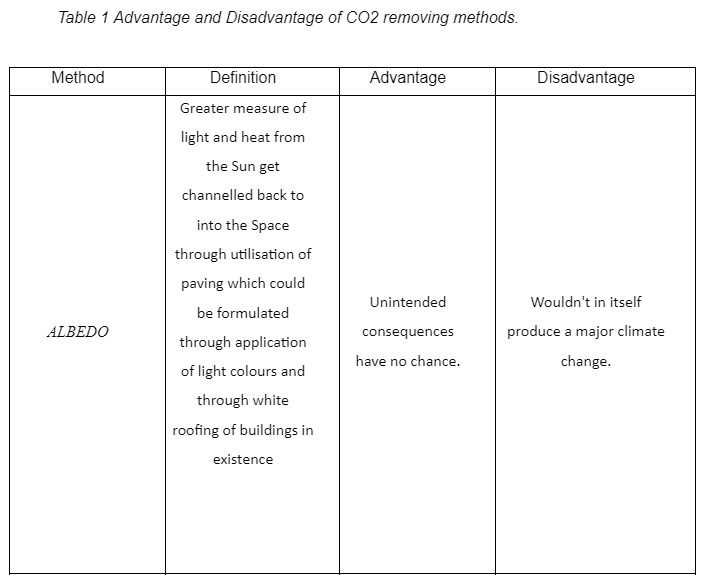

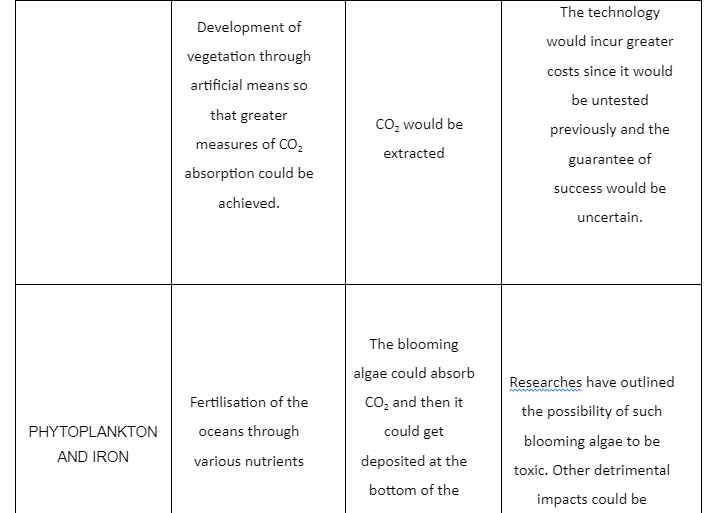
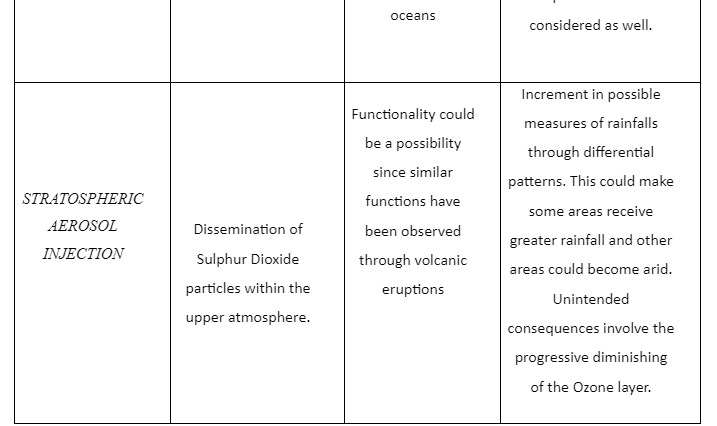
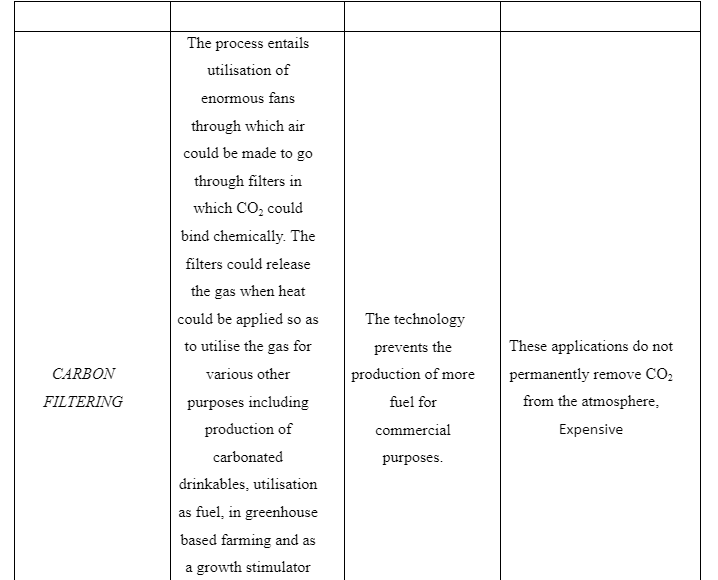
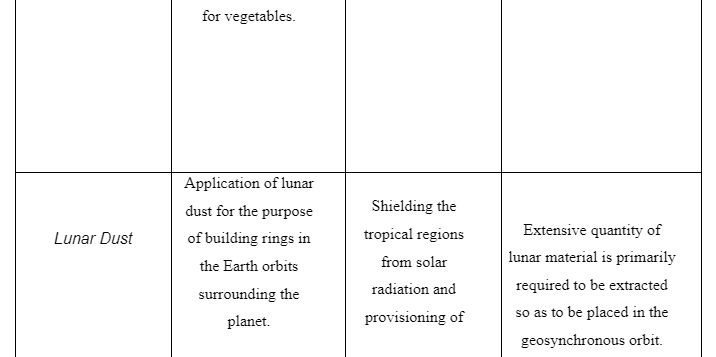

Sunshade Formation
The main purpose of a space sunshade disk or mirrors is to absorb solar radiation (SR) to effect global cooling before it reaches the Earth. The most traditional technique or process used in applications for this is a single disk, reflecting or diverting sunlight (Early JT, 1989) at the L1 level. There are no widely known or debated sunshade plans focusing on the use of two or more large disks. Robert Angel then makes one suggestion for a sunshade made of tiny' flyers' scattered in an elliptical cloud (Clark, 2009). As with methods of shading, these different configurations have advantages and disadvantages for realistic use as a means of full control of solar radiation.
Sun-shading Method
The instrument of the space sunshade constitutes a mirror which could reflect the solar radiation and light and it is formulated by either a lens or a mesh which could successfully deflect the light away. The instrument could also collect and re-emit the received radiation and sunlight towards any pre-determined direction. The various proposed approaches outline practicality of application as well as advantages and disadvantages when these could be considered from a practical perspective.
Lenses The propositions associated with Fresnel Lens had been the second idea brought forth by Fresnel Lens which only has a height of few microns only. This instrument could be considered to be sufficient concerning the blocking of light with an approximate reduction of 20 in the incident of light and radiation received by the Earth (Early JT, 1989). Concerning the process of reflection, the achieved deflection could minimise the momentum which gets produced by the radiation incidence, however, it would require greater mass in comparison to other instruments which could be equal in their mesh potentials. The extensive mass and size could entail certain challenges concerning the utilisation of such a lens. Extremely thin sheets or films of materials which could be ultra light in their weights could be utilised for the purpose of construction of such a mirror or screen. To construct a strong lens in this context, large amounts of materials and extensive mass would be required even for the thinnest of the lenses.

Mirrors The discussions undertaken by Early concentrating on the mirrors had been published in the original article which specified the idea about Sunshading (Early JT, 1989). The effective mirror could be formulated through the application of a thin and reflective disk, anything else which could reflect solar radiation could be utilised to this purpose, however, such elements are required to be capable to endure the levels of received radiation as well as would have to be able to maintain the position in the orbit through defying the thrust which would be produced by the reflection of the radiation from the deflection panels of such a mirror. Such objectives could be achieved through constructing a mirror which could become extensively absorbent on the side which could face the Sun and could be comparatively emissive on the side which could face the opposite direction of incidence of the rays of the Sun.
However, such solutions are not considered to be able to address the problems completely (Early JT, 1989) and the additional problems could remained unresolved such as the exact materials which could be applied for the purpose of absorption and emission of solar radiation involving various wavelengths and concentrations of radiation measures through time duration which could be sufficient in terms of the core objectives of such an endeavour.

Meshes
A mesh that deflects light uniformly away from itself in identical and opposite directions may theoretically regulate the velocity of incident solar radiation, so it would only have to control its own moments because of gravitational forces. Meshes reduce mass as 50 per cent or more of their volume can consist of space rather than material. Teller, Wood and Hyde discussed the use of metallic meshes in LEO (Stern, 2013), and Angel's flyers have a nearly mesh-like disc film (Angel, 2006). This saves energy, minimizes unwanted momentum, and because Angel is built into the stepped-hole of his fabric, this can be used to help remove any reflectivity that may occur from the materials used, etc.
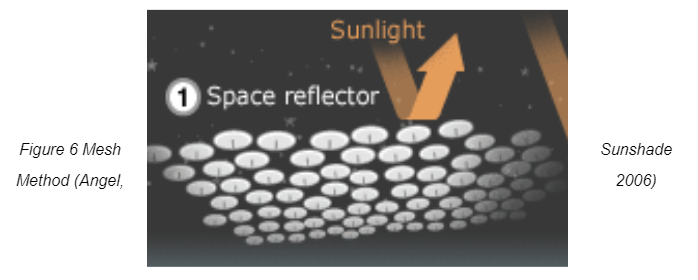
Conducive Plate
Teller et al. had addressed the application of the LEO involving the platelets which could be high electrical conductors so that these could absorb solar light incidence and emit an approximate measure of 50% of the scattered infrared emission of radiation back into the void of space (Stern, 2013). It is required to be performed successfully concerning the LEO or beyond since it involves oxidisation within the atmospheric conditions similar to that of a net constructed out of plastic and this process of oxidisation shortens the length of life of such instruments for any realistic application purpose (Stern, 2013). Greater efficient procedures of station keeping, in comparison to the meshes and lenses, would be required to be applied to the platelets if these get deployed in space at the geo-synchronous orbit. As has been mentioned previously, the incident effect of light on the platelets could produce extensive thrust which requires to be overcome completely and, in spite of the fact that low reflectivity towards the Sun and considerable impassivity towards the Earth facing side could mitigate the effects of such a thrust (Early JT, 1989), still, in comparison to the lenses and the meshes, the platelets would be suffering from greater and untoward momentum.
Comparison between SRM methods
The approaches which, could be, categorised under the Space Radiation Management (SRM) processes, involve dissipation of aerosols at the Stratosphere and Albedo cloud enhancement. However, the most logically promising could be understood to be that of the space sunshades. Aerosols are comparatively greater well known since such elements are comparable to the volcanic sulphates which could occur naturally. The problems associated with such elements are the expenses which could occur in processing the aerosols and then lifting them to the destination orbits along with the management of the associated side effects such as Stratospheric enhancement of the temperature of such aerosols. Albedo cloud enhancement through application of salt sprays could also produce negative radiative forcing in a similar manner to the aerosols, however, greater research has to be undertaken for such a technology to become a viable option towards the achievement of the objectives. From a practical perspective, the entire idea would become relatively obsolete if the model developed by Latham and Salter (Eh, 2008) regarding the application of salt spraying vessels which could be powered by the wind. Such methods involve procedures such as the following:
Cool roofing. 2: Intensified forestation. 3: Grassland and Oceanic Albedo. 4: Crop enhancement.
These methods could be utilised in combination with each other for the purpose of production of adequate negative radiative forcing so as to reduce the forecasted rise in temperature. The cooling process is required to be ensured not to become constricted on regional basis and not to have any detrimental effects on farming and wildlife. Utilisation of technologies which could be in existence already could be considered to be the method of progression. Varieties of plants which could have been bio-engineered explicitly for this purpose could be utilised in this context. The added benefit of this approach would be the introduction of such methods in a time efficient manner since these do not require any additional developmental research.
The applications related to iron fertilisation of the ocean are limited since the existence and impact are localised, the scientific comprehension about the efficacy of such a method is also not extensive involving the long term effectiveness and the lowering of global temperature through such a method has not been attempted earlier. However, if the concept involves the reduction of temperature of oceans or seas for the purpose of preventing the Deglaciation effects involving either the ice sheets of Northern and Western Atlantic or various other glacial formations, the, such a concept could be considered to be an appropriate one. Out of the concepts in existence, the two methods involving aerosols application at the Stratosphere and enhancement of clouds are considered to be exact parallels to the process of emplacement of a sunshade in the space orbit in terms of efficacy and size of the projects.
From a definitive perspective, the space based sunshade could be considered to be the most effective method through which protection from solar radiation could be achieved due to the absence of detrimental side effects and dearth of additional interference generation by this system in the terrestrial ecology based natural cycles and processes. If the required time could be availed, prioritisation of carbon removal could be undertaken since this process could resolve the fundamental causes associated with the enhancement of global temperature along with the various other concerns such as enhancement of acid levels within the oceans. The simplistic approach of lowering of temperature could not be the required resolution in this context. Greater developmental research could be undertaken towards expansion of the affordability of space based sunshades as well as to extend the feasibility of such technological instrument through reduction of costs of construction. In any manner, alternatives with greater desirability have become available with lowering of costs and time efficient production processes. Thus, such proposed sunshade instruments could not be produced in the same manner as these could have been when the concept had been proposed initially. Political concerns such as the accountability factors as well as the issues relating to collaboration could outline the fact that it is unlike that any substantial format of global climate change mitigation could be implemented if major changes in the climate and political spheres do not occur.
Table 2 Outline Concerning The Comparisons Between the proposals of Carbon Dioxide Removal Processes And Albedo Modification Proposals
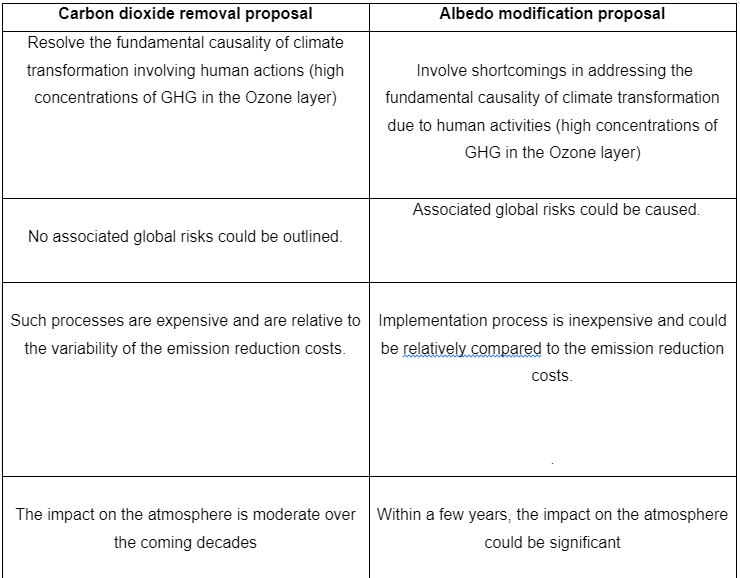
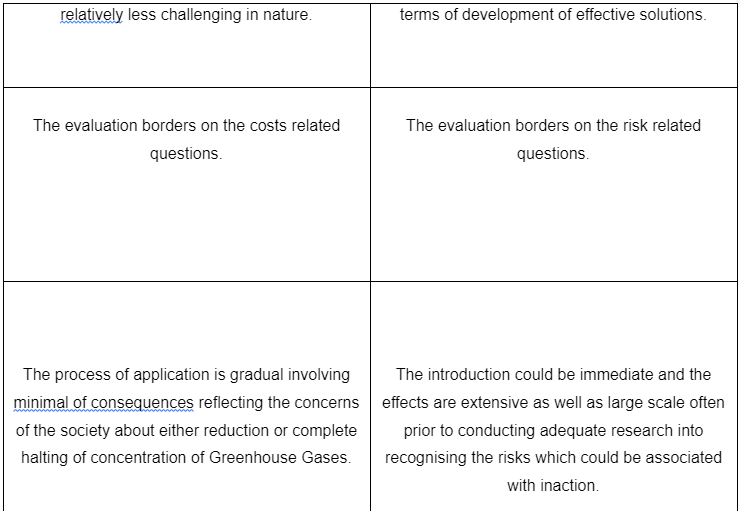

Preliminary Climate Engineering Field Experiments
Some of the main projects, known as LOHAFEX, was a 2009 Indo-German fertilization trial in which six tons of iron as an iron sulfate solution is distributed over an area of 300 km2 in the South Atlantic(Ebersbach et al., 2014). It was supposed to cause an algal explosion, leading to CO2 alerts and some of the algae ended up as carbon sink in the ocean bottom.
In July 2012, a widely debated, related experiment was performed by entrepreneur Russ George, who put the estimate. 100 t of iron sulfate in the Pacific Ocean, some hundred miles west of the Haida Gwaii / Canada Islands. The goal was to increase the phytoplankton production rate for salmon fishing (Sweeney, 2014).
In 2005, Switzerland conducted a research project to coat a glacier with a transparent foil. It was discovered on the Gurschen glacier that the blanket decreased the melding by 80%. Further studies were carried out on the Vorab glacier in an area of more than 28,000 m2 (Lackner, 2017).
Painting the Andes: In 2009 the World Bank awarded seed grants to 26 creative climate change initiatives, chosen from 1,700 (World Bank) applications. One proposal from Peruvian designer Eduardo Gold was among them to whiten the top of the Chalon Sombrero in the Andes. This pilot project received positive media coverage (see Figure 7) (Ayacucho, 2010).

In the UK SPICE project, a trial balloon flight was planned; (see Figure 8). The plan was to take one balloon into the atmosphere for 1 km and to release droplets of water. These droplets would produce clouds, which will increase the albedo. The trial had to be canceled because of resistance from conservation organisations (Lackner, 2017).

Tree planting (reforestation, afforestation) and peatland restoration activities are being considered in several parts of the world. Reforestation applies, according to the IPCC, to the creation of forests on land that has a recent tree cover, whereas reforestation applies to land that has been without forest for longer periods of time (Lackner, 2017).
Cool roof experiments: In cities, thanks to heat-absorbing facilities such as dark asphalt parking lots and dark buildings, the temperature is usually 1–3 ° C higher than in the rural countryside. By through reflectivity, more light is transmitted back into space and energy costs can be reduced (air conditioning). Pilot projects are, e.g., the “White Roof Project” and New York’s “NYC Cool Roofs” (Lackner, 2017).

Keeping groundwater level and salinity low.
In Australia, the rising salt groundwater levels pose a challenge for the farmers. By dumping groundwater into shallow evaporation ponds, crops are covered and increased albedo has a favorable side effect. (Edmonds and Smith, 2007); see Figure 9.
The researcher also describes reflective covers on water bodies to prevent evaporation losses. According to (Ming et al., 2014), 40–50 % of the water stored in small farm dams of “hot” countries may be lost due to evaporation. Such covers, as a side effect, increase the albedo and thereby contribute to climate change mitigation; compare Figure 10.
The researcher also explains reflective covers on bodies of water to avoid loss of evaporation. According to (Ming et al., 2014), 40–50 per cent of the water stored in "hot" countries' small farm dams may be lost as a result of evaporation. These covers increase the albedo as a side effect, and thus contribute to mitigating climate change; compare Figure 10.
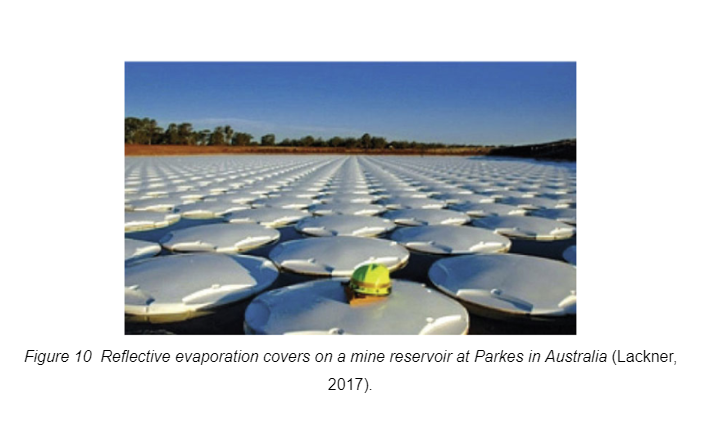
Research, development and deployment in UK
The 2008 Climate Change Act mandates the UK to reduce greenhouse gas emissions by at least 80 per cent by 2050 relative to 1990 rates. When the UK approaches 2050, its remaining emissions will likely be in the sectors where it is the most difficult to cut them.
Greenhouse Gas Removal (GHGR)
GHGR technologies (techniques) are expected to play a significant role in offsetting such emissions. However, the Paris Agreement provides an objective to produce net zero global greenhouse gas emissions in the latter half of the century. As indicated in the Clean Growth Strategy, The UK Government claims that it will have to legislate at a reasonable point in the future for a net zero emission goal. Our independent experts, the Committee on Climate Change (CCC), have made it clear that GGRs globally and in the UK will be central to realizing this aim under the Paris Agreement (Hemsley, Smith and Thompson, 2016).
In October 2018, responding quickly to the release of the Intergovernmental Panel on Climate Change’s Special Report on Global Warming of 1.5°C, the UK, Scottish and Welsh Governments jointly asked the CCC for their advice on the implications of the Paris Agreement for long-term emissions reduction targets, including on setting net zero targets. We expect the CCC to provide their evidence-based advice in spring 2019 and will consider it carefully once it is received (Removal, 2018).
The UK Government has no new plans to implement unique GGR technology outside on-going Green Growth Strategy promises to plant 11 million trees in England, to conserve peatland6 and to raise the volume of UK timber used in construction projects. Any further deployment must be informed by thorough understanding of the costs, feasibility and environmental and societal impacts. Such awareness is currently minimal so we are taking aggressive measures to improve our awareness of these technologies and move forward with implementation wherever such implementation could be possible.
• We have been working with the Research Councils, who launched an £8.6 million GGR research programme in April 2017;
• In September 2018, the Royal Society and Royal Academy of Engineering published a report reviewing a broad range of GGRs, and provided related UK and international recommendations; • We have commissioned a study on how GGR activity can be incentivized in the UK and in other countries, which will be published in spring 2019.
• In November 2018, we published an action plan setting out how Government and industry can work in partnership to achieve the Government’s ambition for carbon capture, usage and storage (CCUS).
As indicated in the Clean Growth Strategy, In the framework of these items of research, we will build our strategic approach to GHGR technologies including consideration of how to reprioritize current expenditure on innovation.
Solar Radiation Management (SRM)
The Government is not deploying SRM, and has no plans to do so. The UK government conducted work on the impact of SRM on environment, which found that implementation of SRM would result in changes in trends and volumes of rainfall. That will undoubtedly lead to "winners" and "losers," with negative effects in some countries.
The UK Government is not commissioning further research into SRM, but the World Climate Research Programme’s (WCRP’s) Geoengineering Model Intercomparison Project (GeoMIP), is investigating the effects which SRM would have on the climate.
Regulation
We would expect any deployment of GGRs to comply with local, national and international regulation and guidance. Some forms of geo-engineering are already regulated. Large-scale afforestation in England, for example, is protected by the Environmental Impact Assessment Regulations.
In addition, work has been undertaken to examine how existing instruments could apply (Removal, 2018):
• The Government has reinforced the Agreement on Biological Diversity (CBD) in its review of existing regulatory instruments. Following consideration of this review, the 13th Conference of the Parties (COP) to the CBD adopted a decision in 2016 noting that more research is needed. The COP also recalled a previous decision in 2010 which invites Parties to take a precautionary approach on any geo-engineering activities that may affect biodiversity until there is an adequate scientific basis to justify such activities, with the exception of small-scale, controlled scientific research studies.
• The government has also agreed to research on the reduction of maritime pollution by dumping of wastes and other issues under the London Protocol to change the mechanism to address this current challenge. In October 2013, the Parties to the London Protocol adopted an amendment to govern the practices of ocean fertilization and, probably, of an amendment to regulate ocean fertilisation activities and, other forms of marine geo-engineering. The UK was the first country to ratify the amendment, in 2016.
Chapter 3 Governance and calculations
Calculations
Many space-based geo-engineering simulations target a 1.7 per cent drop in solar insolation to counter the impact of CO2 concentration doubling. This planned decrease of solar insolation has been seen to achieve a decline in the global mean surface temperature which is adequate to account for the anthropogenic rise (Larosa and Mysiak, 2019). Hence, the shade cast by the occulting Sunshade-mirror must reduce the solar flux received at the Earth, S = 1367 W/m2 (Sánchez and Mcinnes, 2015), by ΔS = 23.24 W/m2. A quick estimate of the radius of the occulting Sunshade-mirror R SSM can be obtained by comparing the solid angle subtended by the Sunshade-mirror and the Sun, as seen from the Earth (Biggs and Mcinnes, 2010). Thus,
RSunShadeMirror= R dSSMd∆SS =915 km (1)
where
R⊙ = radius of the Sun = 696,340 km
dSSM = distance of the occulting Sunshade-mirror from the Earth = 1.5x106 km
d⊙ = distance of the Sun from the Earth = 148.77 x106 km
ΔS/S = solar flux (1.7%)
Figure 11 shows firstly how, as the occult Sunshade-mirror is positioned closer to the classical Lagrangian point L1 position , the disk mass increases to infinity, since more mass is needed to anchor the disk at a particular location by the the acceleration caused by solar radiation pressure. Second, as the Sunshade-mirror is positioned farther from the classic L1 point, this mass need eases, but the area requirement increases to retain the necessary solid angle to shade the Earth, resulting in an ideal mass location near the Earth's 2.4x106 km (Sánchez and McInnes, 2015).(Sánchez and Mcinnes, 2015).
When repeat the calculation with the optimal distance from the earth 2.4×106 the optimal radius will be 1465 km.
Figure 11 estimates the mass of the occulting sunshade mirror assuming a solar radiation coefficient (Q) equal to 1 because the sunshade mirror is reflected type. The figure linearly scales with Q. A non-reflecting black occulting disk with solar radiation coefficient (Q~0.17) would result in approximately a factor of six saving in mass, thus a minimum mass of 40 ×109 Kg in MacInnes’s research and 14 ×109 Kg in angel’s research with Q= 0.04 instead of 400 ×109 Kg in this project with Q=1. This mass is the total mass of the sunshade disk without the holes, so that the actual mass of the sunshade mirror with holes will be 200×109 Kg approximately half of the mass without holes. It is clear then that the lower the solar radiation coefficient Q, the lower the mass of the geoengineering system.
So that the total mass of the sunshade mirror in case of the optimal radius 1465 km is 200×109 Kg.
SRP-displaced Sun-Earth L1 Point
The preferred location for the Sunshade-mirror is the place where the tidal forces from the Sun and Moon, along with the solar radiation pressure (SRP), rotate with the Earth in a reference frame. This location is commonly known as the Lagrange L1 Sun- point and allows the occult Sunshade- to stay in a place where it can shed continuous shadow on the Earth (see Figure 11). If SRP is not mentioned, the place of equilibrium is at 1.5x106 km from the Earth. Nevertheless, the force exerted by photons that impinge on the occult Sunshade-mirror is not negligible, and displaces the location of equilibrium sunward. It is because, as experienced by the Sunshade-mirror, the reverse square SRP decreases the Sun's powerful gravitational pull, displacing the position where the Sun and Earth tidal forces and the SRP force in the spinning reference frame balance each other.
The effect of SRP can be quantified easily using the 'lightness' parameter β, which is the force ratio attributed to SRP and solar gravity, which can be expressed as a function of the occult area-to-mass ratio Sunshade-mirror ASSM/MSSM (Macdonald and Mcinnes, 2005).
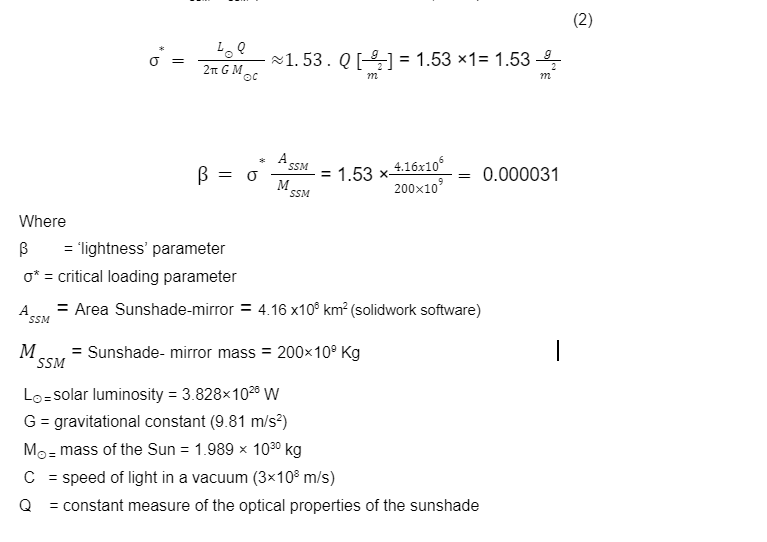
Eventually, the constant Q is a function of the sunshade's optical properties, so that Q = 1 is equal to a perfectly reflective surface, that is, specular reflection and Q = 0 would account for photons passing through the Sunshade-mirror without any scattering.
Thus, the actual value Q depends on the optical properties of the occulting Sunshade-mirror material; thus, for example, a reflecting metallic Sunshade-mirror would have Q~0.91, while a non-reflective black occulting Sunshade-mirror would be equivalent to Q~0.17 (Mcinnes, 2002).
Assuming the motion of the occulting Sunshade-mirror within the frame of the Circular Restricted Three-body Problem (‘book reviews’, 1968), the acceleration on the Sunshade-mirror due to the solar radiation pressure can be expressed as (Macdonald and Mcinnes, 2005):
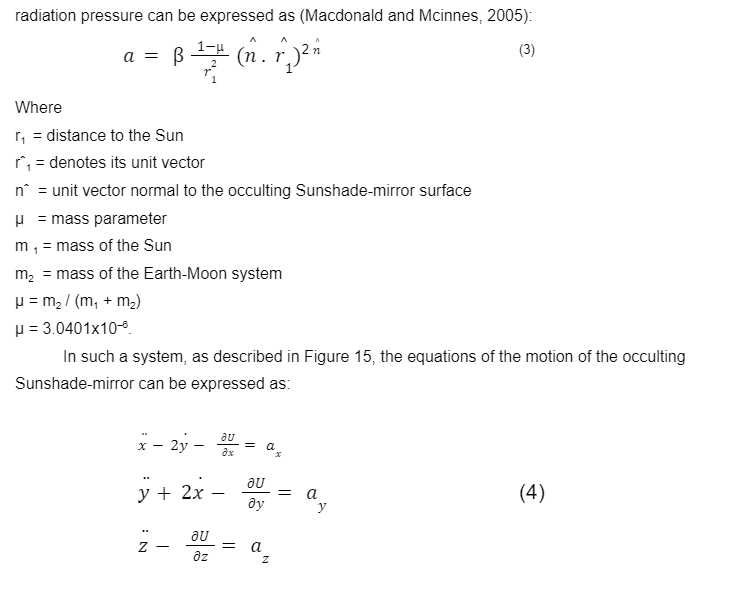
Where the acceleration of the SRP (a x, a y, a z) can be determined by the angles of the cone and clock (α, δ). For this study, the cone angle α determines the angle between the normal to the surface of the occulting disk and the Sun-line and the clock angle ÿ is here defined as the angle between the projection of the normal to the surface of the occult Sunshade-mirror on the y-z plane and the y-axis (see Figure 13). Considering both Eq 4 and the latter definitions, the acceleration vector (a x, a y, a z) can then be expressed as:

It follows, then, that since the necessary Sunshade-mirror region is defined as a function of the distance to the Earth as expressed by Eq 1, the equilibrium location is thus defined uniquely by the system mass. The mass required to shade the Earth by 1.7 per cent can then be measured as a function of the distance from the earth.
MATLAB Result
The main objective of this MATLAB code in appendix to calculate the total shading area on the earth for the project final design of the sunshade mirror with radius 1465 km. This code was published before in MacInnes research (Sánchez and Mcinnes, 2015) and we depend on it to calculate the total shading area related to our design. The resulted curve from MATLAB shown in Figure 12, from this figure the total shading area is 6.75×106 km2.
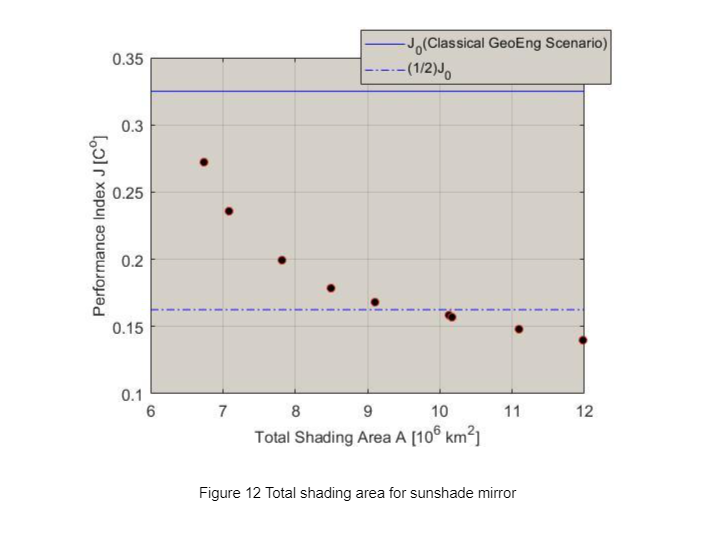
Stress on the hollow sunshade mirror
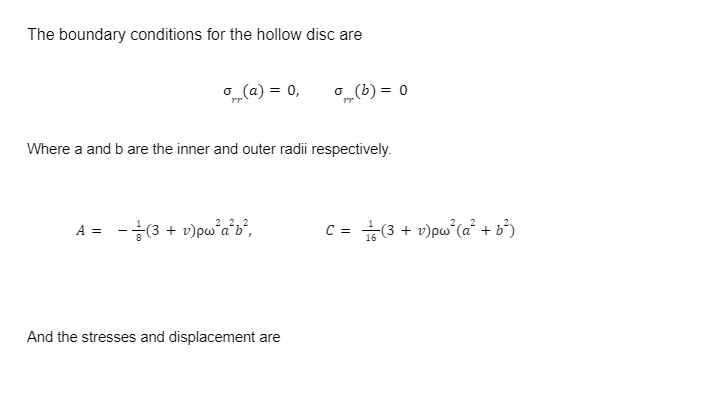


Governance
The process of governance could be intended simply as the persistent and unambiguous application of authority for the purpose of controlling differential actions which are specifically intended to be oriented towards achievement of particular goals. However, concerning the functions of solar geo-engineering, such processes are specifically difficult on account of multiplicity of reasons. The trans-boundary effects pertaining to the large-scale outdoor functions would be crucial in this context and it is generally acknowledged that global effects could be generated through adoption of such functionalities. These complications as well as the fact that the national states would be implacable in terms of maintaining their authority of decision formulation process regarding the deliberations over climate change, would be making the nation states the most significant functionaries in this process. However, the dearth of unified mechanism concerning the formulation of rules and regulations, management of compliance and adjudications based on establishment of international order, could be considered to be a significant influent in the overall process which could impact the efficacy of the process. Although, the states are expected to behave in accordance with the stipulations of the International laws which have been established and executed by the states themselves. Significantly, such states are not bound by any form of commitments regarding the treaties which they have desisted from ratification. If not so, then, the states would be required to have to commit to the multilateral agreements or treaties which could, in turn, demonstratively constrict their latitude in terms of utilisation of the functionalities of Solar Geo-engineering processes (Reynolds and Reynolds, 2019).
Secondly, the process of solar geo-engineering could orthogonally intersect with the existing approaches. The modern environmentalism had been motivated for more than the previous five decades by the proposition that lesser intervention within the natural world could is vital in terms of achievement of the sustainability as well as the various other social objectives which are desired generally. From a practical perspective, the solar Geo-engineering related risks have contributed in the dissolution of the political coalition which had existed throughout the majority of the previous five decades in terms of the promotion of the climate governance.
Thirdly, the framework of problems regarding the solar Geo-engineering is primarily extensively complicated though this complication measure could not be compared with the measure associated with reduction of emissions. Although it is evident that emission reductions along with the CDR could garner net benefits globally, still, each of the participants in the governance process could only absorb all of the costs while receiving only a partial and insignificant portion of generated benefits. Thus, the individual participants generally tend to their interests of not participating in any form of functioning which could not garner sufficient benefits for them and this is the fundamental reason that reduction has not been adequate so far. On the other hand, net benefits for singular participants could be generated such as any state which could undertake the responsibilities given the reduced implementation costs of the methods of solar geo-engineering. Such states could continue their participation, however, others could decide against taking a firm stand on utilisation of solar Geo-engineering. The national states and various other players could be inclined towards early enforcement of the same or at greater pace than necessary, such actions could reflect the common interests of such functionaries in collaborating towards restriction of their activities for prevention of any such fruitless endeavours and possible political reprisals. In hindsight, the core problem could be identified as abetment and this has been preventing the state actors who have the capacity form doing what could be necessitated and this process is also making the solar Geo-engineering implementation problematic and the process is fraught with impediments (Victor and Victor, 2008).
Finally, it would be completely speculative to put forward the proposition that regulations should be developed concerning the utilisation of solar geo-engineering. The reason could be presumed as not the concerns associated with the impacts of greenhouse gases on the climate although such factors are significant, rather, the complications are mostly financial in nature. For multiple decades, the measures of cooperation at the international level could not be ensured in terms of international relations and various ambiguities exist in this context. The initial one is the question whether or not the nation states would be content with the same conditions of the global climate which had been prevalent at the pre-industrial phase or, whether the states could accept any altered global climate conditions with 1.50C to 20C or with divergent warming patterns and finally, to what extent would the states favour the their coveted environment to be made relative to various other objectives of theirs. Simultaneously, the existing decision formulation process on the solar geo-engineering has been formulated, not on the problems of instillation but, on defining and documenting the identified criteria, promotion of successful and responsible work, mitigation of the displacement of populations due to adverse effects of emission reduction and finally, avoiding the excessive focus on any singular part of the projects.
Less ambiguity persists around the topics involving the priorities, capabilities and principles of such nation states who participate in the global climate change management processes. Thus, the involved functionaries are greater optimistic regarding the governance relevance.
The developmental research involving solar geo-engineering process within the vacuum of policy determination has not been progressing, though there are occasional evidences to the contrary to such observations. However, from a practical as well as the legal perspective, it is not stringently necessary for additional legislation pertaining to solar geo-engineering to be developed. Thus, as there could be no legally enforceable framework which could be considered to be relevant to the solar geo-engineering, from a functional perspective, there has been a system which has been established involving appropriate international and national legal promulgations, gudielines and structures which could be utilised for the purpose of development of the general principles through which the functions and decisions could be performed. A brief overview of such legal governance propositions in existence has been provided (Harrison, 2018).
The expansion in scope and outwards migration of the activities related to the process of solar geo-engineering process, the emerging challenges could be identified as environmental risks, at the initial prospects, the potential impact could be considered to be minimal as well as temporal in terms of size. The regulations pertaining to the domestic pollution and liability measures within the developed, industrialised nations are stringent enough. This has been the case of multiple developing countries as well.
For instance, within the United States of America, the source of the majority of existing solar geo-engineering projects has been the National Environmental Policy Act. This act permits the federal governments to both analyse as well as evaluate the impacts of such projects on the environment, to manage the financial investments and issuance of engineering or construction permits and also to assess the major effects. Furthermore, the Clean Air Act could determine the extents to which chemicals could be released within the atmosphere in terms of air pollution. The Endangered Species Act outlines the bans which could be placed on actions which could be legally considered to be generating active jeopardy to the endangered species or impacting adversely on the habitats of such endangered species. Finally, the Weather Modification Monitoring Act makes it mandatory for the federal governments to monitor the operations and functions associated with geo-engineering projects. In this context, the common tort laws could be utilised to implicate the personnel or the organisations which could be involved in the conduct of solar geo-engineering processes and could have been responsible for causing damage to various properties or to others.
As has been mentioned earlier, the regulation of developmental research as well as implementation of the envisaged solutions of the global warming processes could require utilisation of the pertinent legal conditions under the existing international laws. International conventions could be the initial considerations, however, the international customary laws which have become imperative in terms of the commonality and clarification of practices between differential states which are further related to the obligatory international practices executed by the states, are also significant in terms of the regulating the solar geo-engineering processes which could be performed at the industrial scales. To this effect, among other aspects, the jurisdiction of individual states regarding their territories could become constricted by the obligation of such states towards their responsibility to reduce the risks which emerge from extensive damages caused by transboundary effects of such engineering projects.

The other aspects of the formal international legal structure are the various treaties which are arrived upon by different sovereign states. Some of these treaties also could be applied to regulate the solar geo-engineering projects. The most effective starting point could be envisaged as the climate policy however, such a policy could not be applied to the functions of the UNFCCC. The objective has been to control the concentrations of greenhouse gases in the atmosphere which could remain outside of the ambit of solar geo-engineering based implications. The Paris Agreement could be considered to have greater versatility as the objective of this agreement is the reduction of global warming and individual states could flexibly tailor their responses towards such requirements. Hypothetically, the participants could integrate the practices relative to the solar geo-engineering processes into the specific approaches which could be defined rationally so as to achieve the warming reduction related objectives within their agreements which could be further translated into the strategies of adaptation for such countries. The objective would be to regularise the implications related to such functionalities in terms of the global stocktaking phases.
Both the Montreal Protocol and the Vienna Convention regulate the emission of particular compounds which are responsible for ozone depletion within the atmosphere by the individual signatory states. It is thus necessary for the signatories of the Montreal Protocol to implement policies which could actively regulate the emission of such materials which actively deplete the ozone layers. Long-Range Transboundary Air Pollution Convention has also outline a series of various treaties which could restrict the emission of various precursors of the environmental pollutants such as Sulfates and other elements responsible for acid rain from primarily the industrialised countries. Monitoring at extensive scale, that of the application of such treaties could be a parallel effort in terms of fulfilment of such schemes of global warming reduction(Reynolds and Reynolds, 2019).
The United Nations Convention on the Law of the Sea is the primary international convention which controls the activities associated with the maritime industries including the responsibilities of different signatory states to provide protection to the marine ecosystem and environment as well as the conditions which could permit effective scientific research at the oceanic subsurface. It has to be noted that the greenhouse gases and global warming have to be either avoided, mitigated or regulated when such emissions could impart deleterious effects. Thus, from a practical sense, this could be a catch 22 situation when the process of solar engineering could be an instrument of mitigation or regulation of such harmful emissions of pollutants or greenhouse gases as well as the root causality of such emissions.
The London Protocol has been formulated for the purpose of governing the maritime dumping operations and the latest amendment has involved the 51 members in terms of governing of the maritime geo-engineering. This amendment is oriented towards inclusion of Solar Geo-engineering processes as well. However, in terms of active practices, some limitations could be imposed on marine geo-engineering processes in terms of permitting only the legitimate scientific investigation and research to continue. However, the approval provided to this protocol has not been adequate enough. The Convention on Environmental Modification has explicitly forbidden the utilisation of harmful and offensive technologies which could include Solar Geo-engineering as well.
International Law could be identified to be laws which transcend the legal boundaries of nation states. Various principles such as equality and solidarity, individual yet shared obligations, commonality of concern regarding the climate change and prevention of harm to the climate are core fundamentals which direct the definition and execution of the international laws. The involved processes are collaboration, communication, deliberations, creations and formulations of various norms through which the growth in responsibility management could be achieved and the international institutions become the cusps of such changes. For an instance, the United Nations Environmental Assembly could undertake specific debates but could not approve the resolutions proposed in context of investigation of the processes, evidences and existing as well as future governance propositions regarding the procedures of Solar Geo-engineering during March 2019. Other organisations which could execute similar roles and functionalities could be identified as the World Meteorological Organization, the IPCC, the United Nations General Assembly and the United Nations Security Council (Science, 1983).
Private Governance
Private companies or individuals with the expertise and financing needed are permitted to install a space sunshade without government support or regulation(Banerjee, 2011). Including unilateral deployment, private sovereignty that come at the expense of being unable to access national or government facilities and resources, including launch sites and current science and technology that is limited or regulated. Again, as with unilateral deployment, this will not have a drastic end result because the accountable private sector also has the potential to effectively grow and deliver, although the time to complete will be extended and the duration shortened depending on the situation. Private companies may also have to provide a sort of co-operative partnership to the governments of nations under which scheme work is carried out in order to enable the scheme to begin or proceed, but government funding can also be used to promote the initiative, depending on what conditions and criteria it might include, so that this cannot really be viewed as an advantage or drawback.
The particular challenge for private governance is the idea of a for-profit space sunshade deployment. In scholarly literature, the concept of private sovereignty geoengineering is sometimes explored as regards rich companies or people who plan to take steps to mitigate climate warming while climate diplomacy will or will not. However, it is not out of the question for the company responsible for the sunshade to use it for profit, including by receiving national payments or incentives for the shade and its expenses, using the technologies built for other business projects or other methods during the sunshade scheme. t might actually establish an ethically damaging scenario in which a profit-seeking company does something that impacts the whole world. Such a scenario would be avoided, perhaps by international regulations, but if it were to arise, it might have wide-spread consequences on world relations, currencies, and more. While that may not be possible, as it is more plausible that a private governance system will be altruistic in nature, the prospect must be considered as, for the purposes of this analogy, a clear downside of private governance must be considered.
Equally dependent on how a private scheme applies to the applicable authority, is how ENMOD impacts a private scheme at all and questions about armament. ENMOD does not protect private climate change campaigns, but this only happens because there are no direct policy links within the program. Otherwise, ENMOD can bind a private scheme with strong bonds, etc.
Via such relations, in addition to any rules and limitations set down by related governments themselves, as well as the opinions of any government not specifically linked to private parties, linked governments may be forced to take action by non-connected governments on the private scheme. This dependency also extends to the unaffected regions 'insurance problems. A private regulatory body cannot provide compensation if it does not choose, because it has the right to select so an agency restricted by government legislation and intervention may have no choice but to pay vulnerable states.
Private governance advantages, however, include the option to operate a space sunshade production and implementation scheme using a more competitive business model that would allow tighter commitment to technological and science requirements without affecting non-technical considerations, as well as theoretically lower overheads and costs because the project could be managed independently from the government. The proposal will also operate secretly irrespective of political intention and motivation, circumventing what might be called the existing impasse on substantive action on global warming, as well as circumventing the conditions for universal consensus within the scientific community on the proposal. Often, a privately launched sunshade initiative will never suffer from imperialism problems, like nations opting out of a government-level scheme because it doesn't serve the political condition of that country or favor the country sufficiently. It can happen for participating companies or financers, but a private scheme will actually be able to legitimately obtain basic requirements and conditions of partnership to a greater extent than an international agreement.
The project design launch method
The final design of our project has dynamic sunshade disk with variable radius, because it consist of 6 layers the first one is the basic disk which can use individual, but the additional five layers increase the radius and the total area that the disk can cover it and protect from sun radiation. In our design each layer individually increases the radius by 200 km. this dynamic design gives the advantage of simplifying the launch process and maintenance. In the launch process, the dynamic design will decrease the total required energy (mass of rocket and asteroid) compared to one massive disk with total radius equal to the summation of the six layers because each layer will be launched individually.
Blast-wave accelerators or QED / ARC IEC systems are, as discussed earlier, sensible options for launching sunshade vehicles while Ion Propulsion is an alternative for post-launch motion. If prices at the low end of the projected cost of the blast-wave accelerator would cost $200/kg while the QED / ARC IEC would cost $29-$ 51/kg and ion propulsion(Davis and Ave, 2004), given the cost per engine of € 200,000, the cost would then be $244,740 per vehicle, which would equate to about $245/kg of sunshade launched. It will give starting sunshade costs between $262 and $445 per kilogram. The $445 premium for the use of ion propulsion and blast-wave accelerators should be increased because the techniques selected are already either in operation or are in the near future and thus will not need significant research until they can be used(Davis and Ave, 2004).
Chapter 4 Project Design
Sunshade-mirror Characteristics
Perhaps the most realistic, but obviously still difficult, Space-based approach is the construction of a massive sunshade or disk, or cloud of smaller structures covering an equal shading region to minimize solar insolation. Such proposals usually involve deployment of the occult structure near the L1 Lagrange equilibrium point on the Sun-Earth axis, as shown in Figure 14, some 1.5x106 km sunward of the Earth. The calculated mass of the system used is in the range of 107–108 tones ((Salter, 2008),(Sánchez and Mcinnes, 2015)). While this is clearly a vast space-based endeavor, its mass is already at the same engineering scale as terrestrial civil engineering projects (e.g., the Chinese Three Gorges Dam). In addition, as discussed earlier in the literature review, sunshades tend to be one of the most effective approaches of tackling climate change, as well as one of the few strategies with the ability to achieve the requisite reduction in solar insolation.

There are five Lagrange points, L1 – L5, in the plane of a planet's elliptical orbit around the Sun (see figure 14), which are characterized by the fact that if a third body (a sunshade-mirror) is located at one of these points, the geometric figure between the body, the Sun and the Earth remains continuously self-similar (the principle illustrated in figure 15). For our purpose the most important, particularly Lagrange point L1, are the so-called collinear solutions based on L1, L2 and L3. If a sunshade-mirror was positioned at L1, it would stay on a straight line between the Sun and the Earth at all times, and could cast its shadow on the Earth forever.
Therefore, using a minimum of mirrors, this would make it possible to reduce the solar radiation power on Earth. Unless we presume that the satellite's mass is small compared to the Earth's mass, then the distance between L1 and the Moon is d = 1.5 x 106 km, or about four times the distance between the moon and the Earth. The sunshade mirror would have an infinite synodic period and its sidereal period would be the same as that of the Sun (Hagel, 1996).
Three-Body Problem
The Lagrangian points are five points that were discovered by two different researchers. In 1750, Euler circa discovered the points L1, L2 and L3 whilst Lagrange discovered L4 and L5 in around 1760 (Kosugi, 2010). These five points are the equilibrium points in the Restricted Three- Body Problem. In other words, the analysis of the gravitational effects of three astronomical bodies on each other, given that two of the bodies are massive and the third is considered to be of negligible weight (Kosugi, 2010). Euler was proposing a Restricted Three Body Problem when he observed the Moon's movement around Earth, believing the Earth and Sun orbited each other and the Moon was massless. The five Lagrangian Points are the five solutions found to the problem.
Euler was proposing a Restricted Three Body Problem when he observed the Moon's movement around Earth, believing the Earth and Sun orbited each other and the Moon was massless. The five Lagrangian Points are the five solutions found to the problem.
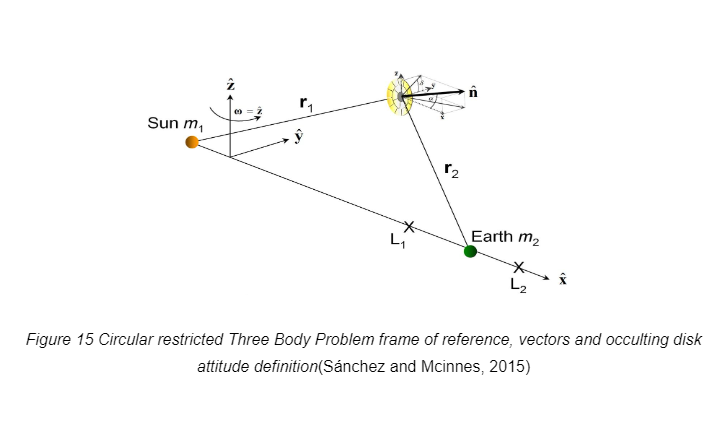
Basic Design
The main idea of the sunshade disk is to design a dynamic circular disk that can increase its radius with the increasing of irradiation of the sun. The following figure shows the basic idea, (figure 16.a) illustrate the design in the low radiation and (figure 16.b) illustrate the design during high radiation.

First Design
In this stage the sunshade mirror designed as a solid flat surface area as shown in Figure 17 with radius 1465 Km (from the calculation in the chapter 3) and thickness 10µm.

Second Design
The same design before with the same entire radius (1465 Km) but with curved ends to accumulate the largest amount of sunlight and reflect it away for the earth’s surface see figure 18.
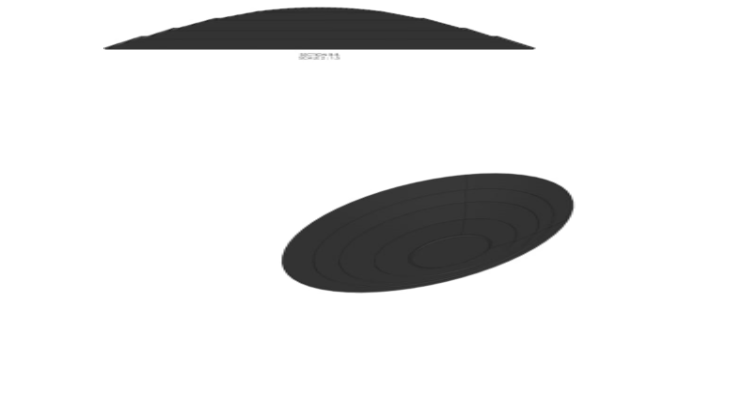
Final Design
The final design is dynamic sunshade mirror with variable radius, and its basic radius as the same as the second design (with radius 465 Km and thickness 10µm with curved ends), but with additional five layers which increase the radius. Each layer individually increases the radius by 200 km, see figure 20 and figure 21. The surface area in this design contains symmetrical distributed holes. The advantage of these holes is that the radiation pass through it, will break away from the Earth's surface. These are holes that are not cut or drilled in a straight manner, but at an angle 10° of inclination to reflect the solar radiation away from the earth. The holes will be distributed symmetrically there will be a hole in a circular distribution making up half the total area. The thickness is chosen such that transmitted light at the peak wavelength of sunlight is retarded by half a wave. The material of the design is Glass coated by silicon nitride. This would cost $110 billion a year with a designed lifespan of 50 years for the sunshade.


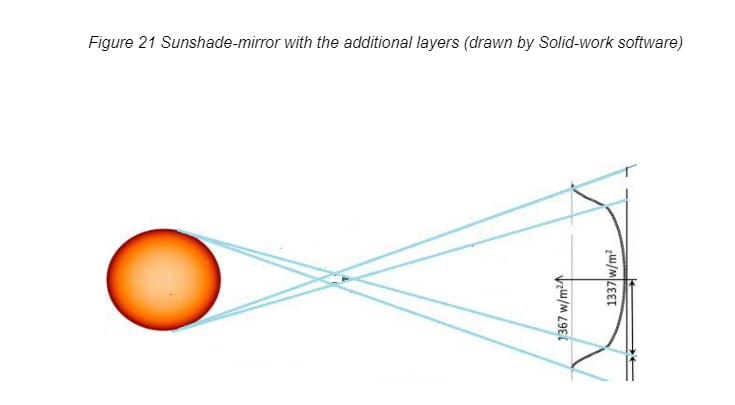
Figure 22 represents the observed solar flux reduction due to the dynamic sunshade mirror as the distance to the Sun-Earth line is 2.4x 106 km. The figure represents a schematic of the frequency of the solar flux seen from an observer on Earth when the occulting mirror was at the point SR-displaced Sun-Earth L1Thus, for example, in a position on Earth where the Sun is at its zenith, i.e. in the central axis in the figure, the solar flux will be 1,337 w / m2 at the top of the atmosphere with an occult fifth mirror of 1,465 km radius, thus as the observer moves away from the Sun-Earth line and the Light moves away from the zenith of the observer, the shadow strength decreases according with Eddington’s approximation.
The initial idea for fixing the additional five layers with the basic sunshade mirror is by using a Laser Photoelectric Transmitter and Receiver Sensor, see figure 23 Sender and receiver are located in two different housings. When the light beam is disturbed this can cause a difference in the receiver's output status. These sensors can detect small items in millimeters with maximum switching frequencies of 2,500/s. These sensors would be fixed at the edge of each layer and the basic sunshade-mirror also.
When the extra launched layer would reach the sensor rang, the outer edge of each layer made of magnetic material that would attract with each other. For more Durability and safety, there are clips that fastening the two layers together.
These supporting parts, sensors and the additional magnetic layers will increase the sunshade-mirror’s weight and its overall cost, so that a second idea is suggested.

The second idea for fixing is using only hooks fixed around the edge of the basic mirror and the two edges of the additional layers. When the extra layers reach beside the sunshade mirror, the two hooks would entrance with each other.
Chapter 5 Comparison between The Designs
Shape
James T. Early, discussed a single massive disk consisting of lunar material. A 2000 km disk on the L1's Sun side would be enough to minimize the incidence of solar radiation on Earth by about 2 percent, which would mitigate global warming for a while. The main problems with a single disk sunshade are obvious: the sheer size of it allows it to be produced in pieces on Earth or else it has to be made in low Earth orbit (LEO), or further away which then requires the ability to create such a structure in LEO or beyond (Early JT, 1989).
Nevertheless, the advantages of using such a device seem to be in the simplicity of using one body as the sunshade, ensuring that one shade only needs to be built, placed and preserved. There is no probability of variability in deflection across the surface, no likelihood of splitting half of a network of sunshades from the rest, and if the sunshade is foreign, it actually has to be moved away from the Sun-Earth axis and the cooling ends. Even disposal is easier than returning multiple shades to Earth or transferring them to a specified disposal location.
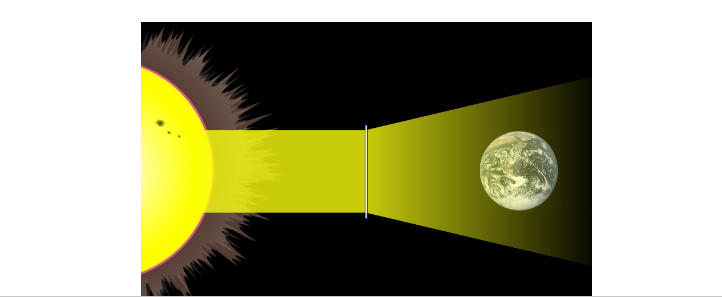
Robert Angel – (2006)
The idea by Robert Angel for a cloud of flyers is focused on relatively new developments and would allow some of them to be developed beyond current limits, but otherwise it is the most feasible form of solution of the three based on current technology and infrastructures. It needs no mega-structures, no off-planet building and installation, and it can be scattered and then returned to location based on the environment on Earth without excessively limitation the sunshade's lifetime by wasting any reserves of fuel for station maintenance (Angel, 2006).
The main problem with many-piece sunshades is either holding the pieces in place next to each other, or free soaring. Relative position-keeping parts can add bulk, need more maintenance and cost more per component, as stated just now. However, if the parts fly free within a certain locus, say, then the number of flyers needed increases to compensate for overlapping flyers and uncoordinated cloud spread (Angel, 2006). Free flying pieces do require any station-keeping method, but as indicated by Angel, this can simply be solar sails, as the pieces do not have to maintain fixed positions but rather stay within a certain range.
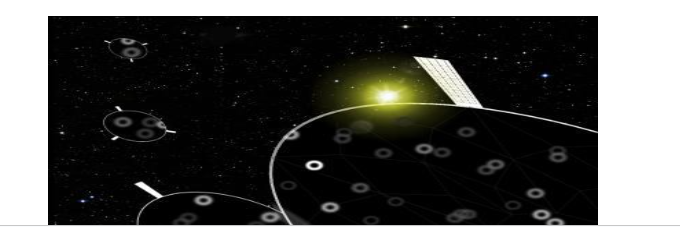
R. Bewick and C.R. McInnes (2012)
This system is proposed as a different to using thin film reflectors, requiring clouds of dust deposited in the locality of the L1 stage. The goal of this system is to decrease the need for space-based geoengineering manufacturing. It was found that the mass requirement for a cloud positioned at the classic L1 level is 7.60x1010 kg yr−1 to generate an average solar insolation reduction of 1.7 percent, while a cloud positioned at a displaced equilibrium point created by the addition of the influence of solar radiation pressure is 1.87x1010 kg yr−1.
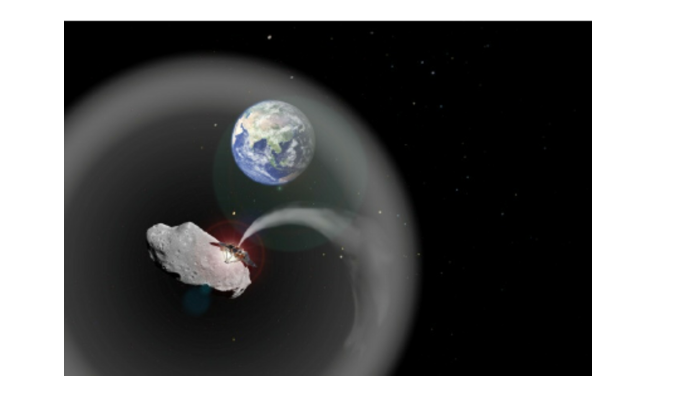
The project designs
The design of this project is dynamic sunshade mirror with variable radius. It consists of six layers of the sun shade, one fixed disc and additional five layers which increase the radius. Each layer individually increases the radius by 400 km, the surface area in this design contains symmetrical distributed holes. The advantage of these holes is that the radiation pass through it, will break away from the Earth's surface. The entire radius (6000 Km) but with curved ends to accumulate the largest amount of sunlight and reflect it away for the earth’s surface

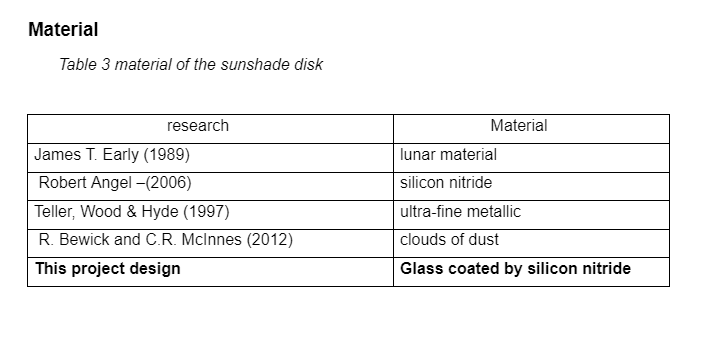

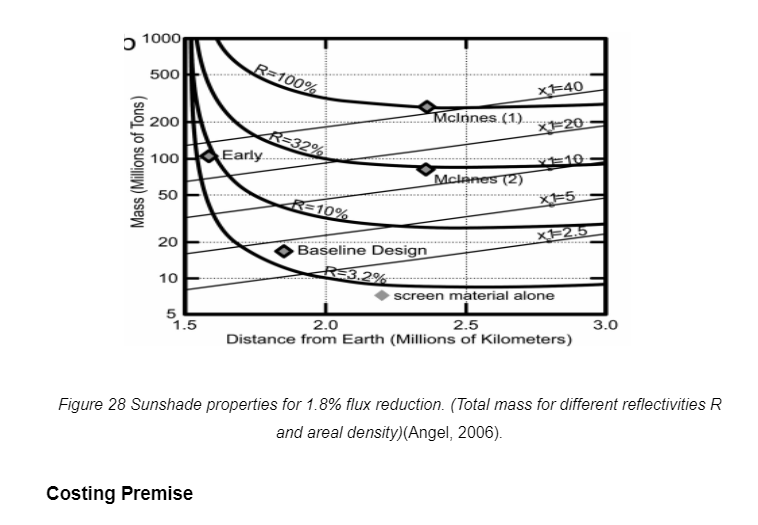
According to the Stern report, the cost of climate change could climb to 5 per cent of global GDP per annum, with further increases not beyond the realm of possibility to a level of 20 per cent. These increases would be pure production and yield reductions, and not increased spending (Harrison, 2018). Conversely, the risk of early and rigorous mitigation measures to avert substantial climate change is estimated at about 1 per cent of annual GDP,(Harrison, 2018) which is also Angel's suggested target budget for his flyers. Therefore, spending up 5 per cent of global GDP to avoid losses of 5 to 20 per cent is economically beneficial, and as long as the cost of the initiative meets these criteria, it helps the global economy slightly. Obviously, however, the better the lower the project budget and the better the upper limit for annual project costs is to limit it to 1% of global GDP. This is more affordable, and is the estimated spending of Stern to avoid future losses. World Bank positions 2016 global GDP at about $75.54 trillion ( Bank, 2018). Global GDP was approx. at the time of publication of the Stern report in 2006. $51.31 trillion (Harrison, 2018) of which 1% would amount to $0.51 trillion, $510 trillion, or $510 trillion. The same number will remain at $0.76 trillion in existing global GDP.
According to Lenton and Vaughan, if each launch was in line with Angel's proposal and included 1,000 flyers, sustaining ample sunshade cover to hold steady temperatures on Earth may entail as many as 135,000 flyer launches per year, (Report, 2009) Any launch system thus needs to be able to support at least this many launches. Launching just 135,000 loads of flyers a year will, as per Angel's original flyer idea, allow over 145 years cumulative time to complete.
Researchers proposed 2 million launches a year for a 10-year completion, (Angel, 2006) but this was estimated suggesting a constant radiative mismatch and global temperatures were not volatile and rising. Nonetheless, given that the Stern study states that significant action against climate change must be taken in 10 to 20 years (meaning from 2006 to 2026) (Harrison, 2018) and that 2050 should be deemed a crucial year for strategy ( report, 2009), Angel's 10-year implementation schedule is reasonable. But that leaves the question that the solution's delivery process will require 2 million launches per year. Angel predicts an acceptable cost to this, but if the 2026 timetable of the Stern study can be skipped, instead the 2050 target offers 33 years for a geoengineering plan to be achieved. This can be limited to 20 or 25 years of launches for a sunshade like Angel's if time is taken for research and development. So, requiring 10 to 25 years to launch, and considering the sunshade takes 20 million launches plus 135,000 additional launches each year after the first launch, the shade would take 21,350,000 to 23,375,000 launches for a complete initial deployment. This means an average start point of 2.135.000 to 935.000 releases per yearIt should be remembered that due to the volume of flyers to be made and released, the cost of construction and production will be similar to the cost of the resources and materials required than would be the case with projects of lower volume (Angel, 2006). In other words, high capital expenditure would be needed in the building of facilities and in the development of technology for the production and launch of flyers, then lower costs would be incurred per kilogram constructed and launched.
Launch Methods
The launch is composed of two parts: Earth to Geostationary Transfer Orbit (GTO) and GTO on to L1. The cost of propulsion by rocket to GTO alone and not to L1 approaches $3000/kg (Science, 1983) or the like. Past this point the use of rocket propulsion only increases costs more. Hence, alternative methods should be investigated to get the flyers to L1. Angel suggested the use of coilgun launchers with ion propulsion after entering GTO for the flayers cloud, (Angel, 2006) but other developments will be considered as well.

From lunar materials launched in orbit
Gerard O'Neill, recognizing the issue of high launch costs in the early 1970s, suggested the development of the SPS's in space using Moon components. Thanks to the lower gravity and lack of atmospheric pressure, starting costs from the Moon are theoretically significantly smaller than those from Earth. This 1970s proposal predicted the expense of NASA's space shuttle for the then-advertised potential mission. This strategy would entail significant upfront expenditure in resources to place mass drivers on the Moon. Nevertheless, the final study ("Lunar Resources Use for Space Construction") by the Convair Division of General Dynamics, under NASA contract NAS9-15560, concluded that use of lunar resources would be cheaper than Earth-based materials for a system of as few as thirty Solar Power Satellites of 10GW capacity each (Science, 1983).
Although NASA's launch expense forecasts were overly ambitious for the space shuttle in 1980, O'Neill et al. presented another path to production using lunar products at significantly smaller start-up costs. The SPS idea of the 1980s depended less on the existence of humans in space and more on partly self-replicating structures on the lunar surface under the supervision of workers on Earth. The proposal's strong net energy gain comes from the far shallower gravitational well of the Sun.
Having a fairly inexpensive supply of raw materials per pound from space would alleviate the problem for low mass designs and contribute to the development of a certain kind of SPS. In O'Neill's view, the low cost per pound of lunar materials will be achieved by using lunar resources to generate more structures in space than solar power satellites alone. Advanced Moon Launch technologies will reduce the expense of constructing a solar power spacecraft from lunar materials. Some suggested technologies, first defined by Jerome Pearson, include the lunar mass driver and the lunar space elevator. This will include building facilities for the manufacture of silicon extraction and solar cells on the Earth.
On the Moon
Physicist Dr David Criswell believes that the Moon is the perfect place for solar power systems and supports solar power development methods which could be dependent on the Moon. The key benefit that he envisages is the production of mostly locally usable lunar materials using in-situ resource use, a remotely operated mobile factory and a crane for assembling microwave reflectors and rovers for assembling and paving solar cells, which will dramatically reduce start-up costs compared with SBSP projects. The initiative also involves power relay satellites orbiting around the earth, and the moon representing the microwave beam. A $50 billion demo network ends at 1 GW. For the Luna Ring design, Shimizu Corporation uses a mix of lasers and microwave, along with power relay satellite
From an asteroid
The exploration of asteroids was also strongly considered. A feasibility analysis by NASA tested a 10,000-ton mining spacecraft (to be assembled in space) that would return an asteroid fragment weighing 500,000 tons to geostationary orbit. Standard aerospace-grade weight will only be around 3,000 tons of the mining container. The remainder would be the mass-driver engine reaction mass, which could be configured to be the rocket stages used to launch the payload. Assuming that 100 percent of the recovered asteroid was usable, and that it was not feasible to recover the asteroid miner itself, this reflects a roughly 95 percent decrease in launch costs. Nevertheless, the true value of such a system would depend on the nominee asteroids obtaining a detailed mineral survey; so far, we have only calculated their composition. One plan is to trap the Apophis asteroid into earth's orbit and turn it into 150 5 GW solar power satellites or the bigger AN10 asteroid 1999, 50x the size of Apophis and large enough to construct 7,500 5-Gigawatt Solar Power Satellites.

Green color in table 7 used for old timings that completed in time, while orange color is for the exam period. While the red color used for overdue tasks and blue refer to new timings. The dark period in each color mean that percentage was completed.
The objective of refining of the project was one of the proposed objectives which was to be performed at the end of the project, but the design and improvement have already been completed to represent a new design which could be acceptable in theory and also by referring to the previous literature, it is possible to implement this design. The problem with this design will be connecting its layers together and connect them to the basic sunshade-mirror, and this will be studied in the coming period. Therefore, the objective of improving the design has been replaced by another one, which is details of the materials used, maintenance, and the final launch method appropriate to the final design.
The new design is a dynamic design, so that the objective will be how to control these layers and when to be connected or separated and how to facilitate this in space. Of course, the design takes more time than that specified for it in the initial Gantt Chart, because more than one design has been done, and that is evident in the updated Gantt Chart in table 7.
The design launch, maintenance, construction and options of disposal for sunshade-mirror tasks was merged before in the initial Gantt chart, but these tasks are incomplete yet. This delay produced because the design is new that mean launch, maintenance and disposal method will need different method from the previous, which mentioned before in literature.
Chapter 7 Discussion and Conclusion
Discussion
There are substantiated issues with the current rise in global temperatures that some sort of climate change may be required to avert severe and permanent damages to the earth and its environment. But, beyond the technological and engineering advancement of the geo-engineering technology, every sort of global climate management is influenced by a great many factors. This makes it impossible to determine a system of climate management or build models and plans for it without an understanding of those non-technical forces as well and therefore the topic of this project is both scientific and non-technical concerns.
Every large-scale method of climate change capable of cooling the Earth to pre-industrial temperatures is a very complicated and expensive endeavor as has been learned during this mission. These ideas are strategically charged, as nations will see the introduction of technologies of geoengineering as efforts to participate in global warfare as forbidden by ENMOD. Nations may fail to accept geoengineering as appropriate, and may withdraw grants, research or other forms of project support. A space-based approach such as the sunshade must therefore address new questions concerning a war in space and the aggressive use of what has been declared a safe and open area for friendly use by all. While the present US government would of course alter with less than a decade, it cannot be concluded that the next president would have differing opinions on climate change and geoengineering.
When originally predicted, the cost of the sunshade-mirror scheme therefore decreases the chance of a sunshade being installed by reducing the amount of bodies that might support this investment. Firstly, the new flyer concept is too costly to build orders of magnitude to be commercially profitable, and secondly, while it costs as predicted, only the US, the UN, the EU and North America may afford to install a sunshade.
Conclusion
A comprehensive literature on the potentials, costs and side effects of various Carbon Reduction technologies and solar radiation strategies is now available for implementation. A thorough review of these shows that nearly all solutions have significant promises and some of these are also costly even if implemented on a wide scale with certain socio-economic and even environmental costs.
This project discusses the theoretical possibility of large-scale constructive regulation of the Earth's temperature increase, in the sense of anthropogenic climate change, while also acknowledging the natural temperature instability of the Earth. Among the strategies for controlling solar radiation suggested so far, space-based concepts are widely regarded as the least timely, although one of the most successful. In specific, the project explores the idea of placing a large sunshade mirror or occulting disk in a stable location near the equilibrium point of the Sun- L1 Lagrange. In some researches that was discussed before in table 4 the position of solar radiation management controller may be at L1, L2, L4 and L5 except L3
In recently published literature, different governance alternatives are discussed, including the institution(s) should regulate the implementation, control, assessment and testing of Carbon Removal or Solar Geo-engineering. Compared to traditional prevention, new aspects of governance alongside a new accounting system may entail different modes of governance.
References
report (2009) SPC_report_Inside_RS1636_Geoengineering_Sep09.indd. Available at: papers2://publication/uuid/A65B8A44-434B-4C10-AD7E-ED7AB5D8CBFD.
Angel, R. (2006) ‘Feasibility of cooling the Earth with a cloud of small spacecraft near the inner Langrange point (L1)’, Proceedings of the National Academy of Sciences of the United States of America, 103(46), pp. 17184–17189. doi: 10.1073/pnas.0608163103.
Ayacucho (2010). Available at: https://www.bbc.com/news/10333304.
Banerjee, B. (2011) ‘The Limitations of Geoengineering Governance In A World of Uncertainty’, 240(May).
Biggs, J. D. and Mcinnes, C. R. (no date) ‘Passive Orbit Control for Space-based Geo-engineering’, pp. 1–8.
Clark, R. (2009) ‘Interactive comment on “ The radiative forcing potential of different climate geoengineering options ” by T . M . Lenton and N . E . Vaughan’, (i), pp. 226–228.
Dan Miller (2012), Global warming could be combatted with asteroid dust acting like a sunshade for earth, scientists say.
Ebersbach, F. et al. (2014) ‘Deep-Sea Research I Particle fl ux characterisation and sedimentation patterns of protistan plankton during the iron fertilisation experiment LOHAFEX in the Southern Ocean’, Deep-Sea Research Part I. Elsevier, 89, pp. 94–103. doi: 10.1016/j.dsr.2014.04.007.
Edmonds, I. and Smith, G. (no date) ‘Efficiency dependence of renewable technologies in reducing global warming’, pp. 1–22.
Hagel, J. (1996) ‘Analytical investigation of non-linear stability of the l a g r a n g i a n p o i n t l4 a r o u n d t h e c o m m e n s u r a b i l i t y 1:2 johannes hagel’, 2(2), pp. 205–225.
Harrison, N. (2018) ‘Technical Briefing Paper : Knowledge gaps on climate-related geoengineering in relation to the Convention on Biological Diversity ( CBD )’, (July).
Hemsley, M., Smith, S. and Thompson, M. (no date) ‘UK Climate action following the Paris Agreement - Committee on Climate Change - October 2016’.
Lackner, M. (2017) ‘Geoengineering for Climate Stabilization Geoengineering for Climate Stabilization’, (October). doi: 10.1007/978-3-319-14409-2.
Larosa, F. and Mysiak, J. (2019) ‘Mapping the landscape of climate services’, Environmental Research Letters, 14(9). doi: 10.1088/1748-9326/ab304d.
Mankins, J. C., Kaya, N. and Vasile, M. (2012) ‘SPS-ALPHA: The first practical Solar Power Satellite via arbitrarily large phased array (A 2011-2012 NASA NIAC project)’, 10th Annual International Energy Conversion Engineering Conference, IECEC 2012.
Mcinnes, C. R. (2002) ‘Minimum mass solar shield for terrestrial climate control’, Journal of the British Interplanetary Society, 55.
Ming, T. et al. (2014) ‘Fighting global warming by climate engineering : Is the Earth radiation management and the solar radiation management any option for fi ghting climate change ?’, Renewable and Sustainable Energy Reviews. Elsevier, 31, pp. 792–834. doi: 10.1016/j.rser.2013.12.032.
Removal, G. G. (2018) ‘The UK Government ’ s View on Greenhouse Gas Removal Technologies and Solar Radiation Management (“ Geo- engineering ”)’, (October), pp. 2018–2020.
Reynolds, J. L. and Reynolds, J. L. (2019) ‘Solar geoengineering to reduce climate change : a review of governance proposals Author for correspondence ’:
Sánchez, J. and Mcinnes, C. R. (2015) ‘Optimal Sunshade Configurations for Space- Based Geoengineering near the Sun-Earth L 1 Point’, pp. 1–25. doi: 10.1371/journal.pone.0136648.
J.Early, W. (1989) ‘Mirrors to halt global warming? [5]’, Nature, 340(6235), p. 603. doi: 10.1038/340603a0.
Stern, N. (2013) ‘The economics of climate change’, The Future of Nature: Documents of Global Change, 7(2), pp. 465–475.
Teller, E., Wood, L. and Hyde, R. (1997) ‘Global warming and ice ages: I . Prospects for physics-based modulation of global change’, 22nd International Seminar on Planetary Emergencies, p. 18.
Victor, D. G. and Victor, D. G. (no date) ‘On the regulation of geoengineering’, pp. 0–15. doi: 10.1093/icb/grn018.
Wingenter, O. W. et al. (2004) ‘Changing concentrations of CO , CH 4 , C 5 H 8 , CH 3 Br , CH 3 I , and dimethyl sulfide during the Southern Ocean Iron Enrichment Experiments’.
Davis, E. W. and Ave, S. R. (2004) ‘Advanced Propulsion Study’, (September).
Dig deeper into Consumer Behaviour with our selection of articles.
- 24/7 Customer Support
- 100% Customer Satisfaction
- No Privacy Violation
- Quick Services
- Subject Experts



